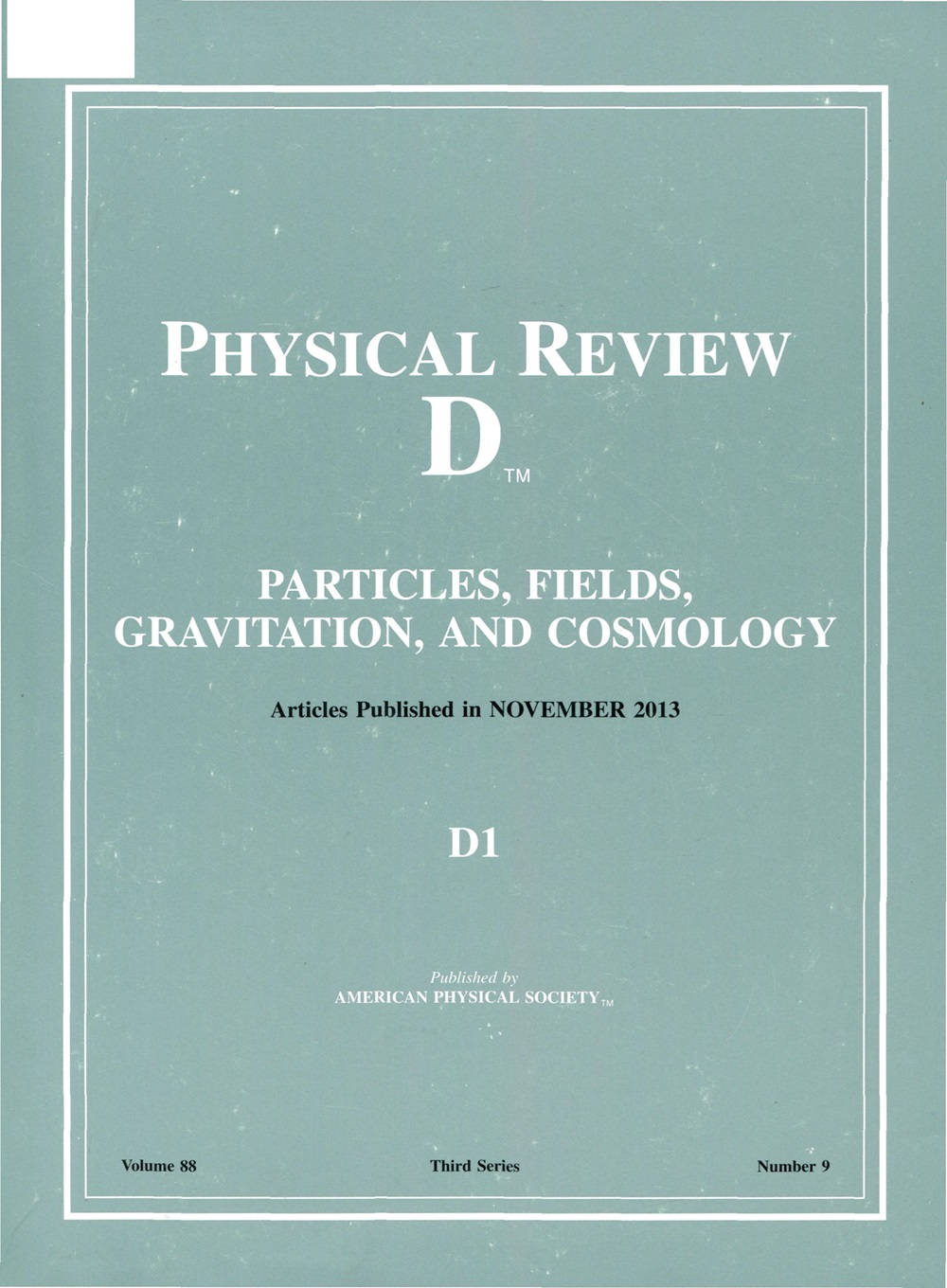Chiral phase transition: Effective field theory and holography
IF 5.3
2区 物理与天体物理
Q1 Physics and Astronomy
引用次数: 0
Abstract
We consider the chiral phase transition relevant for QCD matter at finite temperature but with vanishing baryon density. Presumably, the chiral phase transition is of second order for two-flavor QCD in the chiral limit [F. Cuteri , On the order of the QCD chiral phase transition for different numbers of quark flavours, .]. Near the transition temperature, we apply the Schwinger-Keldysh formalism and construct a low-energy effective field theory for the system, in which fluctuations and dissipations are systematically captured. The dynamical variables involve the chiral charge densities and order parameter (chiral condensate). Via the holographic Schwinger-Keldysh technique, the effective action is further confirmed within a modified anti–de Sitter QCD model. With higher-order terms suitably neglected, the stochastic equations derived from the effective field theory resemble those of model F in the Hohenberg-Halperin classification. Within the effective field theory, we briefly discuss the spontaneous breaking of chiral symmetry and Goldstone modes.手性相变:有效场理论与全息
我们考虑了在有限温度下重子密度消失的QCD物质的手性相变。推测,在手性极限下,双味QCD的手性相变是二阶的[F]。Cuteri,关于不同数量夸克口味的QCD手性相变的顺序,[j]。在转变温度附近,我们应用Schwinger-Keldysh形式,构造了系统的低能量有效场论,系统地捕捉了系统的涨落和耗散。动力学变量包括手性电荷密度和序参量(手性凝聚)。通过全息Schwinger-Keldysh技术,在改进的反de Sitter QCD模型中进一步证实了有效作用。在适当忽略高阶项的情况下,由有效场论导出的随机方程类似于Hohenberg-Halperin分类中模型F的随机方程。在有效场论中,我们简要地讨论了手性对称的自发破缺和Goldstone模式。2025年由美国物理学会出版
本文章由计算机程序翻译,如有差异,请以英文原文为准。
求助全文
约1分钟内获得全文
求助全文
来源期刊

Physical Review D
物理-天文与天体物理
CiteScore
9.20
自引率
36.00%
发文量
0
审稿时长
2 months
期刊介绍:
Physical Review D (PRD) is a leading journal in elementary particle physics, field theory, gravitation, and cosmology and is one of the top-cited journals in high-energy physics.
PRD covers experimental and theoretical results in all aspects of particle physics, field theory, gravitation and cosmology, including:
Particle physics experiments,
Electroweak interactions,
Strong interactions,
Lattice field theories, lattice QCD,
Beyond the standard model physics,
Phenomenological aspects of field theory, general methods,
Gravity, cosmology, cosmic rays,
Astrophysics and astroparticle physics,
General relativity,
Formal aspects of field theory, field theory in curved space,
String theory, quantum gravity, gauge/gravity duality.
 求助内容:
求助内容: 应助结果提醒方式:
应助结果提醒方式:


